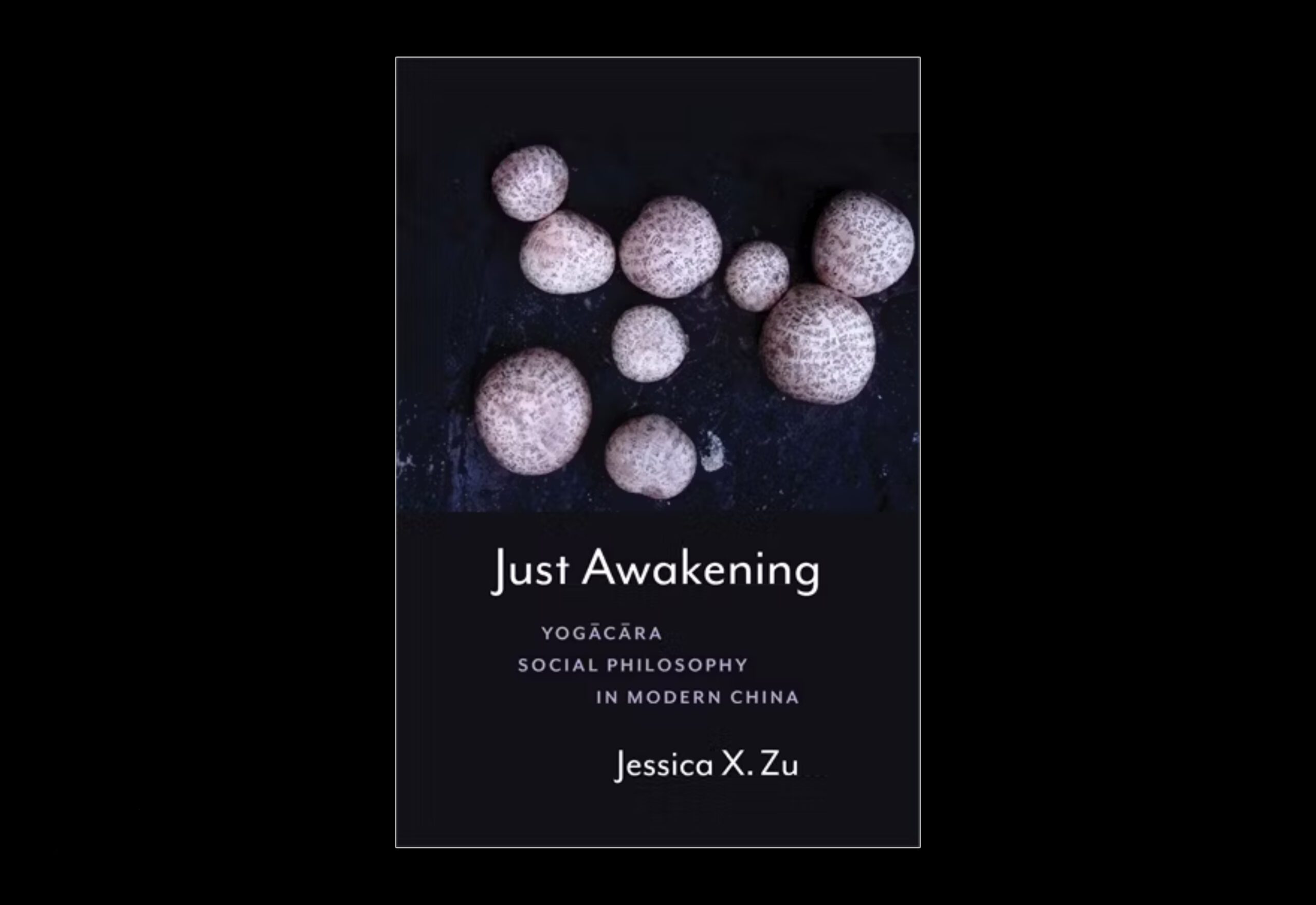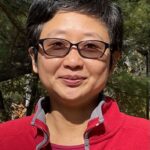Constance Kassor’s review for Buddhadharma:
Yogacara is a philosophical school of Buddhism that challenges the idea of objectivity, arguing that everything that we know is shaped by consciousness. According to this view, we can never access an objective reality beyond our own experiences and concepts. But if we can’t verify the existence of anything outside of our own minds, how can we be sure that we’re all engaging with the same reality?
This question isn’t just an abstract puzzle; it has profound implications for how we understand truth and justice. Yogacara philosophers suggest that we don’t need to assume an external objective reality to explain shared experiences. Instead, they argue that our experiences are interconnected and shaped by causal and karmic influences.
Jessica X. Zu’s Just Awakening: Yogacara Social Philosophy in Modern China explores the dimensions of this philosophy through an unexpected lens: the early 20th-century Chinese art teacher-turned-Buddhologist Lu Cheng. Lu’s interpretation of Yogacara led to a new form of social philosophy which Zu calls “socio-soteriology,” emphasizing the idea that collective liberation leads to a just society.
Zu skillfully blends history and philosophy, first tracing the development of Yogacara social thought in China through Lu’s writings and related sources. She then presents a philosophical analysis of socio-soteriology, using Lu’s arguments to explore new perspectives on the concepts of revolution, liberation, and democracy.
This book will be best appreciated by readers who already have some familiarity with the Yogacara tradition. But those willing to engage with Zu’s historical and philosophical insights will find a rich and thought-provoking exploration of Buddhist philosophy applied to real-world issues of social justice.
[Please note that the text from which this excerpt derives makes use of footnotes, Chinese characters and diacriticals; these are not represented in this excerpt.]
Excerpt:
Changing Referents
Dear Honorable Journalist,
Your journal has a long-established reputation for your goal of reforming literature (gaige wenxue), which often touches upon poetry and theater. Young readers have been inspired [by your journal] profoundly. Truly magnificent! Truly magnificent! In my humble opinion, while it is indeed important and proper to reform poetry and theater, fine art—the one that parallels poetry and theater in art—especially needs to be revolutionized (geming). . .
If the enterprise of aesthetic education has fallen into this [sorry state of affairs], alas, the corruption of fine art in our country is the most severe today. Frankly, we must urgently revolutionize [fine art and aesthetics].
Where does the path of revolution begin? [I] say, first, [we shall] clarify and explain the scope and essence of fine art so that commoners understand what makes fine art aesthetic.
Second, [we shall] clarify and explain the transmissions and principles of painting, sculpture, and architecture since the Tang dynasty so that commoners understand the fine art of our country. [interlinear note]: Since the Tang dynasty, because of the spread of Buddhist teachings, our country’s sculpture and architecture were considerably reformed. Unfortunately, no one has studied this [aesthetic reform].
Third, [we shall] clarify and explain the transformation of Euro-American fine art and the reality of various new schools today so that commoners understand the trends and directions of fine art.
Fourth, based on studies of the true essence of fine art, [we] cross-examine the right and wrong [claims about] various kinds of fine arts in the East, the West, the New, and the Old. In this way, [this knowledge] could assist those who aspire [to practice] fine art to find [their aesthetic] calling and thereby further develop [their aesthetic calling].
If all the above questions are thoroughly studied, then the society knows the true path of aesthetics, which [will] freshen the audiovisual [inputs of the commoners]. Gradually, [the society’s] taste and desire will be transformed. Then there will be no need to dispel the ones [who propagate and practice] vulgar customs. In this way, the [tangible] effects of aesthetic education are not difficult to actualize.
Advocating for these enterprises is merely in the realm of public discourse. However, today’s customs are frivolous, human relations are disoriented, and those who dominate public opinion are mostly going along with [the vulgar views]. Only your journal can plan far and wide, especially regarding the questions of art. If your journal can exert some effort to carry on the extra responsibility of initiating an aesthetic revolution, then you will truly become the Italian Poesia the second. And the benefit your journal engenders will, for sure, not be limited to one people or one time.
I have rashly shared my humble opinion. I look forward to [your] clear instruction.
Yours truly, Lü Cheng December 15, 1918
This spirited reader’s letter to the flagship journal of the May Fourth anti-imperialist movement, New Youth, was sent during the throes of the New Culture Movement that is often deemed a watershed moment in the making of modern China. Written by a largely unknown art teacher named Lü Cheng (1896–1989), the letter called for an “aesthetic revolution.” The editor of New Youth, Chen Duxiu (1879–1942)—a renowned progressive thinker and later a co-founder of the Communist Party of China (established in July 1921), promptly published the letter and broadcasted his unreserved support for such an aesthetic revolution.
Soon afterward, Liu Haisu (1896–1994), a renowned artist and educator, invited Lü Cheng to join his academy and work together to revolutionize art and art education. Lü accepted this invitation and moved to the cosmopolitan city of Shanghai in September 1920. There the once-unknown art teacher not only introduced a wide range of Western aesthetics to Chinese readers but also published several essays and monographs that laid the foundation for the academic discipline of aesthetic studies in modern China.
Lü Cheng would soon be recognized as the most erudite Buddhologist of modern China. At the time of this letter, Lü was already proficient in Japanese, English, and French. He was also able to read German with the help of Japanese translations. His language skills provided him direct access to the riches of Western thought. A few years after he moved to Shanghai he expanded his already impressive knowledge of languages. He acquired research proficiency in Sanskrit, Pāli, and classical Tibetan, enabling him to incorporate cutting-edge philological methods into his Yogacara (the school of consciousness-only) studies.
Today, Lü’s Buddhological achievements, though mostly unknown to Western academics, are well respected within Buddhological circles. However, Lü’s multilingual edition of an abridged Buddhist reader, Zangyao (The Essentials of a New Buddhist Canon; henceforth, Essentials), remains understudied despite its high standard for textual-philological criticism.
Aesthetic Revolution
What prompted Lü to give up his thriving career as a respected aesthete in 1923? What about Yogācāra prompted Lü to devote the rest of his life to studying it? This book traces Lü’s intellectual quest to use art to make activism irresistible, which over time metamorphized into a project of using Buddhism to make revolutionary nonviolence unstoppable. Transforming Yogacara spiritual exercises into resources for an unstoppable project of revolutionary non-violence necessitated Lü’s invention of a new social philosophy, which I term Yogacara “socio-soteriology.”
As a bifocal, diffractive lens, socio-soteriology brings two siloed sets of human inquiries into mutual scrutiny. The “socio” aspect of socio-soteriology in Just Awakening investigates how Lü theorized collective liberation as a co-awakening to social justice, which would in turn promote viable actions to establish a just society. The “soteriology” aspect investigates the philosophical underpinnings of Lü’s social revolution and explores how he retooled the soteriological exercises and philosophical arguments of the school of consciousness-only to theorize both justice and liberation as recurring, motivated patterns of actions and coactions (collective actions) that would surely lead to co-awakening.
Socio-soteriology spotlights a thus-far overlooked metamethodological dilemma that many humanists and social scientists have struggled with and that has yet to be adequately addressed in both Buddhist studies and sinology: namely, how to study incommensurable worldviews. This issue is particularly vexing for scholars of modern Yogācāra because all the modern Yogācārins studied in this monograph actively engaged with the pressing issues of their time—for example, what makes us human in a scientific world (free will or something else) and how to live together peacefully with other humans, other species, and insentient beings.
And yet the modern Yogacarins rejected the modern épistémè because core Yogacara teachings deny two basic modern consensuses: we live in one and the same world, and we are independent individuals. The Yogacara system rejects any ontological subject/object dualistic structure and deconstructs the two pillars of the modern épistémè—subjectivity and objectivity—into aggregates of mental actions, events, and processes. As such, Yogacara philosophy undermines the fundamental premises of the mainstream academic research paradigm, that is, postpositivism that takes the existence of one shared objective world and stable subjective observers as self-evident truths.
To flesh out these metamethodological complexities and their relevance to the present study, in the remaining space of this introduction, I first sketch the fault lines in this metamethodological dilemma. Revisiting the 1980s Euro-American scholarly war over research paradigms in the social sciences, the first section suggests a new referent with which to comprehend how Lü’s socio-soteriology in the 1920s serves as a quintessentially incommensurable research paradigm outside the Euro-American academic orbit. The next section introduces the basic Yogacara worldview, a worldview that rejects the notion of one objective world, posits multiple lifeworlds, and dismantles any naturalization of social kinds, including objectivity and subjectivity. Then the third section outlines how the postpositivist academic standard of objectivity could be replaced with what I term the “Yogacara three Cs,” i.e., intersubjective corroboration, causal (karmic) efficacy, and coherence.
Excerpted from Just Awakening by Jessica Zu. Copyright (c) 2025 Columbia University Press. Used by arrangement with the Publisher. All rights reserved.


